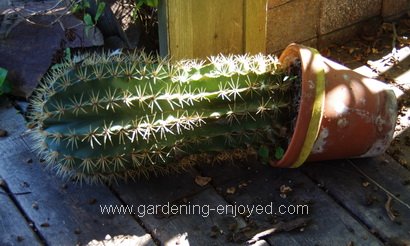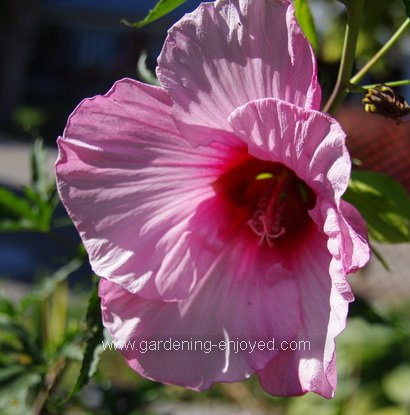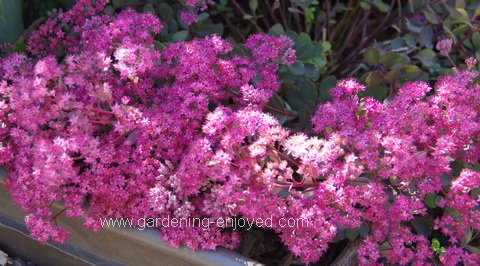| Back to Back Issues Page |
 |
|
Dallying In The Dirt, Issue #270 - Autumn gardening may be my favourite time. September 06, 2016 |
 I came home from the grandsons’ adventure and found the garden in quite good shape but there is always a list of jobs that need to be done, now!
I came home from the grandsons’ adventure and found the garden in quite good shape but there is always a list of jobs that need to be done, now! I have avoided this one. This Cactus was laying on the deck on it’s side and about half out off its pot. I declined to immediately pick it up and repot it. Somewhere in the house is a pair of heavy leather gloves and when I find them I will think about repotting this wonderful Cactus. It has been on its side before and I realize that it needs a bigger pot. That great lump of thorns and flesh is really quite dense and therefore quite heavy. It needs a bigger pot to counterbalance that weight and that makes the repotting process a bit more complex. It has to be a terra cotta pot. It needs the weight and porosity to keep the Cactus balanced and happy. It needs a more open and porous soil that I don’t have readily available. When I find all of those things I will rescue this delightful specimen from its prone position and get it ready to move back into the house for the winter.  Every June I wander around the front garden and search for the perennial Hibiscus. Each year I’m sure they didn’t survive and then suddenly by mid June they appear out of the soil. At this time of year these magnificent blooms appear on stems that can be a meter tall. There is a range of colours through the pink/purple range. They are everywhere in the garden centres these days and they are a good investment. There’s nothing else with these huge showy blooms in the later days of summer. They actually are a true Hibiscus, H. Moscheutos and they are hardy to US Zone 4 or CDN Zone 3 and they actually prefer a slightly moist soil. They will be quite happy in a drier garden but if you want the large blooms then they need to be well watered once they start to bloom. All gardeners seem to want something in their garden that looks exotic.
Every June I wander around the front garden and search for the perennial Hibiscus. Each year I’m sure they didn’t survive and then suddenly by mid June they appear out of the soil. At this time of year these magnificent blooms appear on stems that can be a meter tall. There is a range of colours through the pink/purple range. They are everywhere in the garden centres these days and they are a good investment. There’s nothing else with these huge showy blooms in the later days of summer. They actually are a true Hibiscus, H. Moscheutos and they are hardy to US Zone 4 or CDN Zone 3 and they actually prefer a slightly moist soil. They will be quite happy in a drier garden but if you want the large blooms then they need to be well watered once they start to bloom. All gardeners seem to want something in their garden that looks exotic.If you live anywhere near the village of Brooklin in Southern Ontario, as I do, then here is a great opportunity to hear a very interesting talk. On September 14th the Brooklin Horticultural Society will present a unique and singular evening with guest speaker Bill McNamara from California. Bill is the Executive director of Quarryhill Botanical Garden. He has participated in 23 expeditions to China, 6 to Japan, 3 to North America and 1 each to India, Myanmar, Nepal and Taiwan. He collects wild -origin seed and plant specimens and preserves them for long term study and for the purpose of preserving habitat. Bill’s work helps to reintroduces endangered species into cultivation before they are lost, sharing with arboretums and botanical gardens throughout Europe, North America and Japan. The group meets at the United Church ar 7:30 pm. Now it’s time to answer a few of my reader’s questions. Don’t forget to check the front page of the Website for frequent short ideas for current gardening
activities. |
| Back to Back Issues Page |
